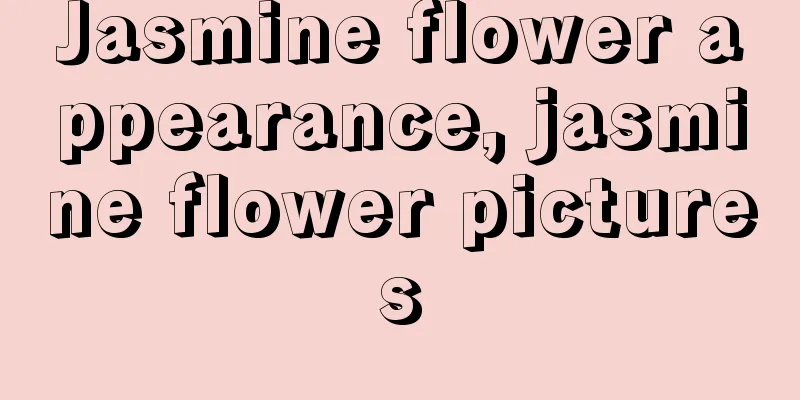Jasmine flower appearance, jasmine flower pictures

1. The appearance of jasmineBranches: Jasmine is an upright or climbing shrub of the Oleaceae family and the genus Jasmine, which can reach a height of three meters. The twigs are cylindrical or slightly flattened, with some hairs on the outer layer. Leaves: Jasmine leaves are usually opposite and have a somewhat papery texture. Its leaves are generally round, oval or obovate, about four to twelve point five centimeters long and two to seven point five centimeters wide, with rounded and blunt ends. The leaves have very distinct fine veins and are slightly raised. The petiole is about 2 to 6 mm long, with short hairs and joints. Flowers: Jasmine has a white corolla in a cyme, usually with three flowers, but occasionally a single flower or even five flowers. The lobes are oblong to round in shape and are about five to nine millimeters wide. The flowering period is generally between May and August each year. Fruit: The fruit of jasmine is spherical, about one centimeter in diameter, and purple-black in color. Its fruit season is generally from July to September each year. 2. Jasmine maintenanceTemperature: It needs to be maintained in a warm environment. It is resistant to high temperatures and also likes warmth. Therefore, you must keep it warm in winter. Pruning: Jasmine is a vine plant, and occasionally some individual branches may grow too long, making it look awkward. These branches need to be pruned in time to keep the jasmine flower in full shape. Water: Jasmine likes moisture and has a strong demand for water. It needs to be watered regularly to keep the soil moist. Light: Jasmine likes strong light, and it is okay to put it in the sun during the growing period. Just be sure not to grow it in a shady place, as this will cause its branches and leaves to turn yellow and fall off. Fertilization: Jasmine flowers bloom a lot, so its demand for nutrients is relatively large. It is necessary to apply fertilizer and topdressing in time. You can choose organic fertilizer or compound fertilizer on the market. It is necessary to follow the principle of applying small amounts of fertilizer frequently. Do not apply too much at one time and mainly apply fertilizer during the growing season. 3. Pictures of Jasmine Flowers |
<<: Jasmine varieties, what does jasmine look like (pictures of jasmine)
>>: What is creeper and what are the characteristics of creeper leaves
Recommend
How to grow hibiscus by cuttings? Can cuttings be done in winter?
1. Methods 1. Time: It is usually carried out in ...
Are gold diamonds poisonous? Can they be placed in the bedroom?
Are gold diamonds poisonous? Gold diamonds are po...
The flower language and meaning of agapanthus, and who should it be given as a gift?
1. Flower language meaning 1. Love comes: Agapant...
What are the cultivation methods and precautions for potted osmanthus
Introduction to potted osmanthus Potted osmanthus...
The difference between Molan and Jianlan
Differences in growth habits Mo Lan prefers warm ...
Which month is suitable for planting open-air cantaloupe?
When to plant outdoor cantaloupe Open-air cantalo...
How to care for camellia to grow vigorously (how to promote the rapid growth of camellia branches and buds)
To care for camellia, you must first meet its gro...
The efficacy and function of Guangdong Evergreen
The efficacy and function of Guangdong Evergreen ...
How to make preserved flowers
Prepare the Materials Flowers, AB solution, sciss...
Winter onion planting method and time Winter onion planting time and management points
Suitable planting time for onions The best time t...
The best time and method to plant loofah
Luffa generally prefers a warm environment, and i...
When is the best time to plant sugarcane?
Sugarcane is not only a key raw material for prod...
How to prune the roots of goldfish spider plant
Does the goldfish plant need root pruning? The go...
How to raise the bear's paw after it turns variegated
What does Chujin mean? Variegation is the result ...
The correct way to water Lithops
The potting soil should be moist in winter and sp...









